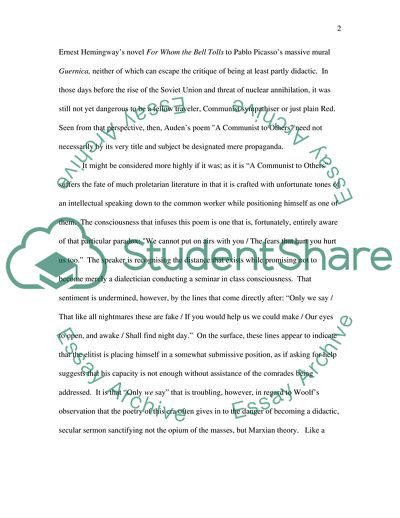Cite this document
(Modernist Poetry and the Issue of Propaganda Article - 1, n.d.)
Modernist Poetry and the Issue of Propaganda Article - 1. https://studentshare.org/literature/1710678-research-essay
Modernist Poetry and the Issue of Propaganda Article - 1. https://studentshare.org/literature/1710678-research-essay
(Modernist Poetry and the Issue of Propaganda Article - 1)
Modernist Poetry and the Issue of Propaganda Article - 1. https://studentshare.org/literature/1710678-research-essay.
Modernist Poetry and the Issue of Propaganda Article - 1. https://studentshare.org/literature/1710678-research-essay.
“Modernist Poetry and the Issue of Propaganda Article - 1”. https://studentshare.org/literature/1710678-research-essay.


